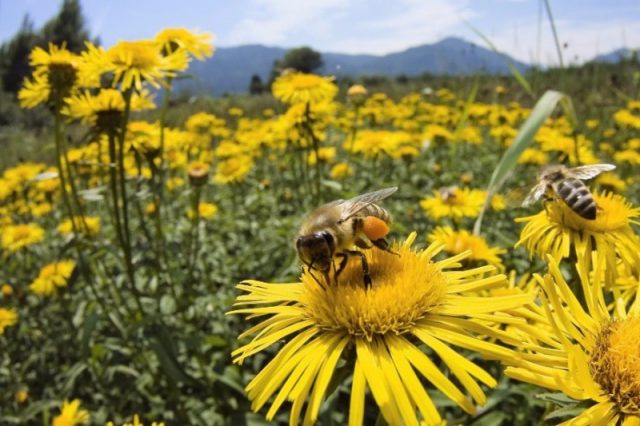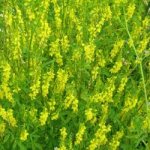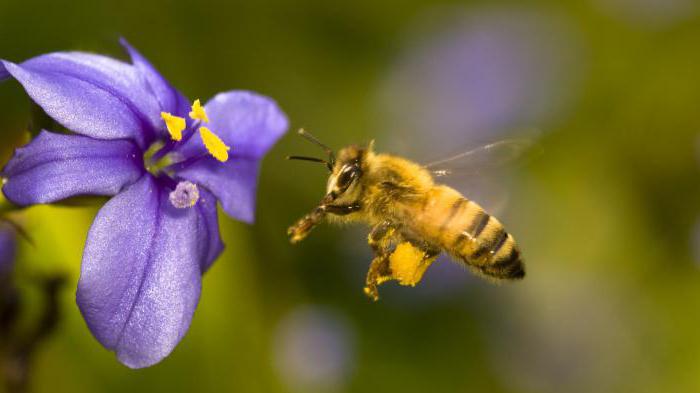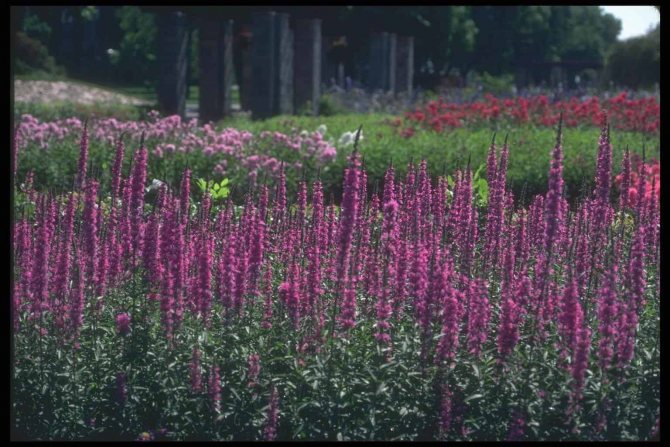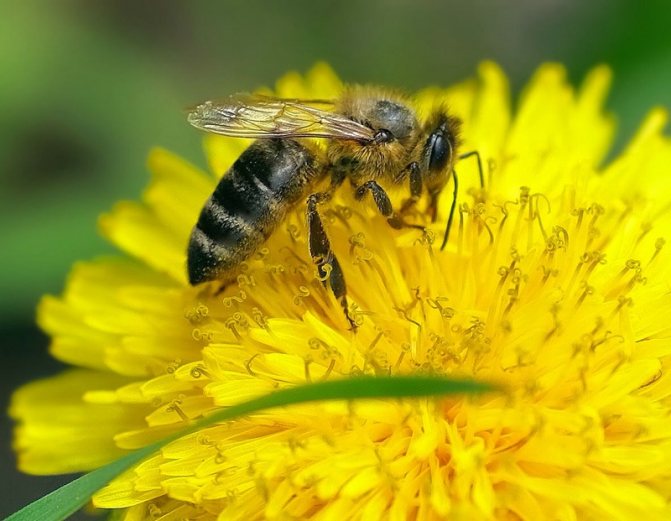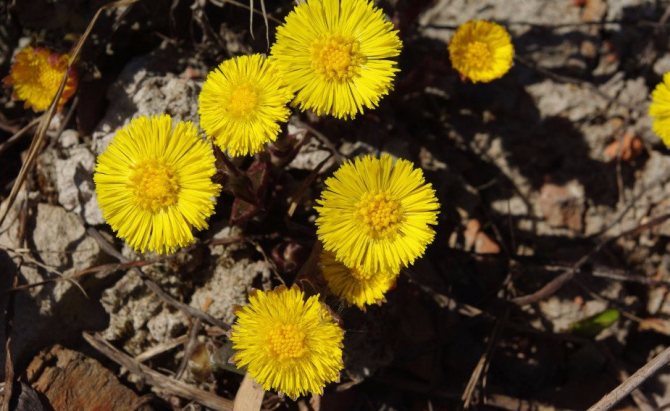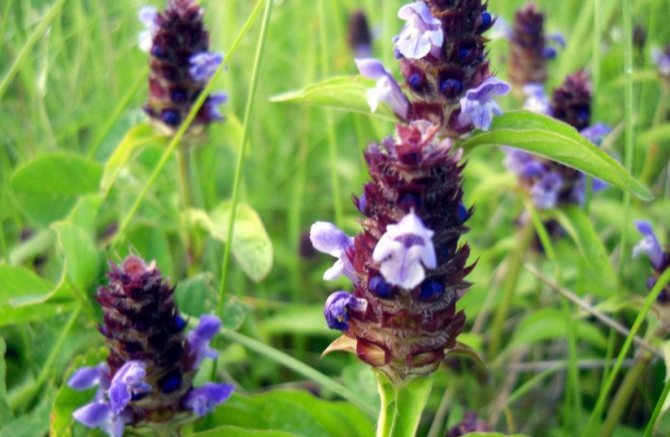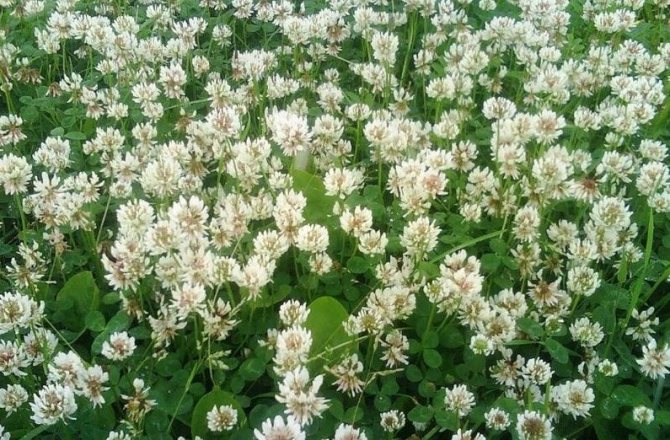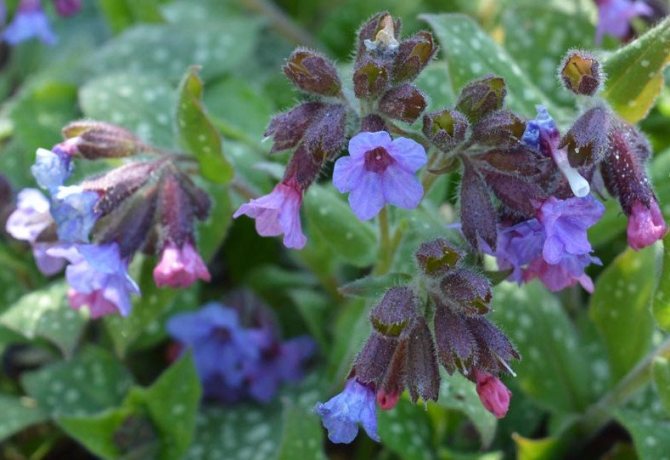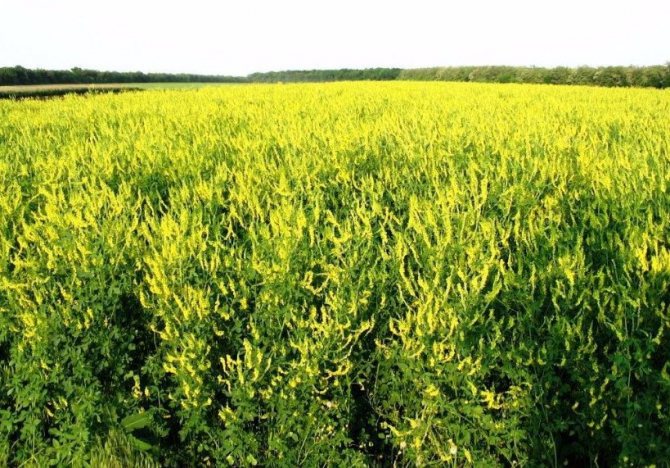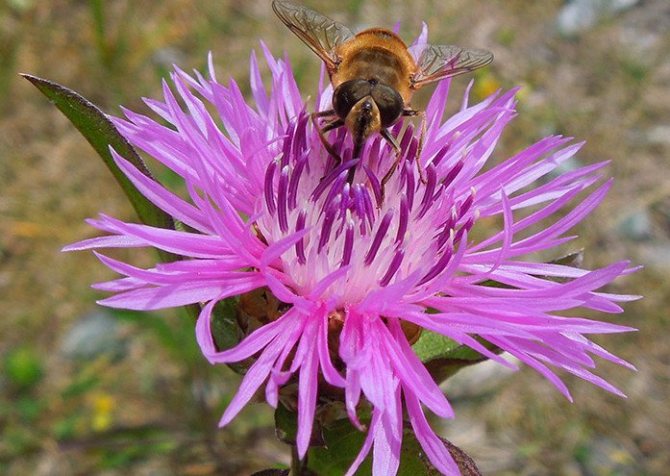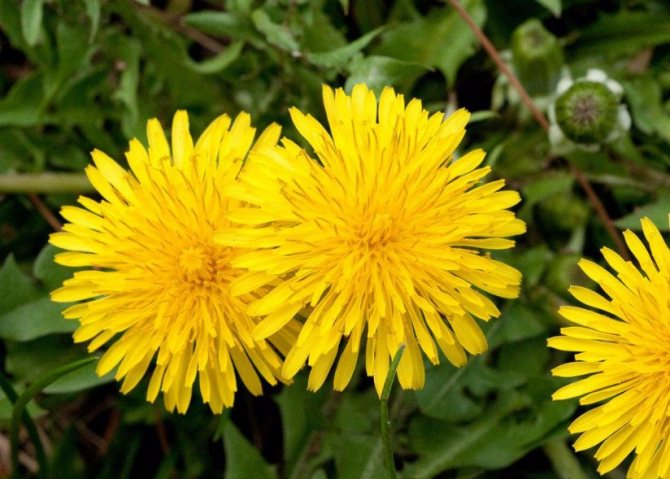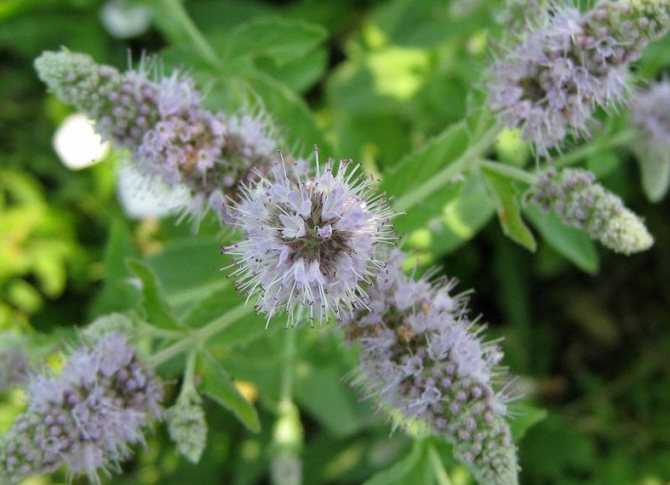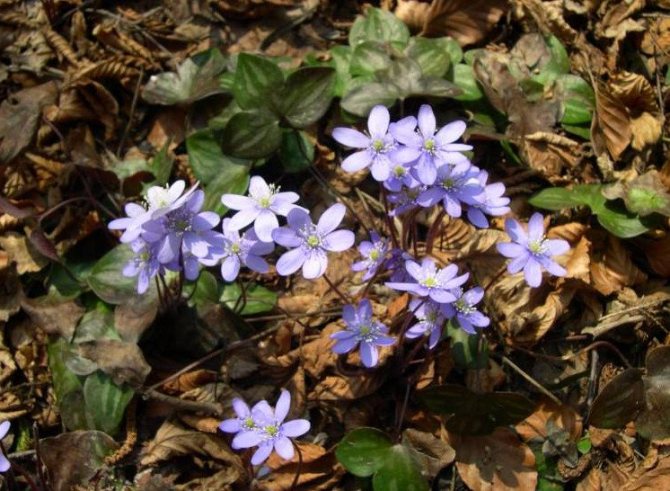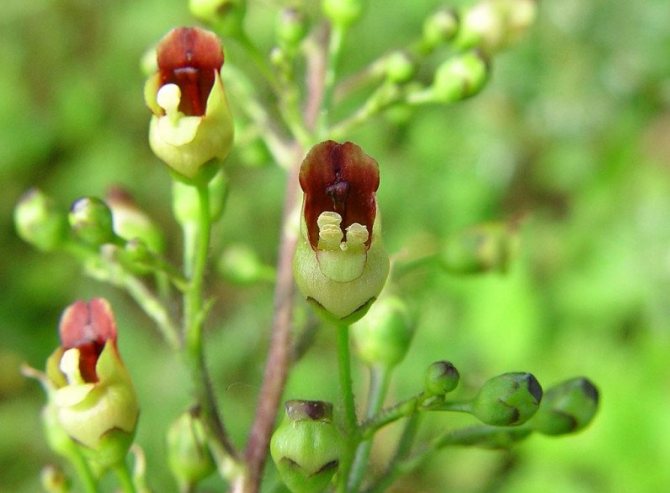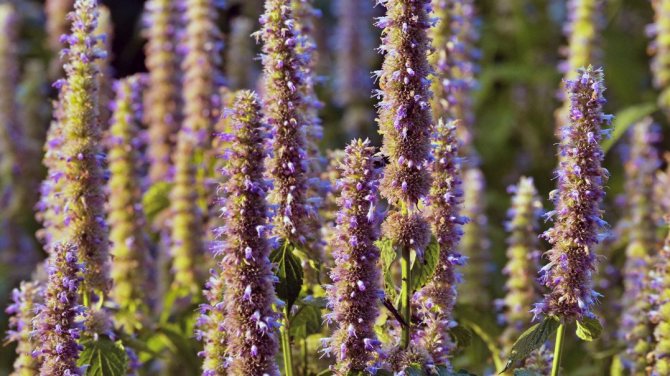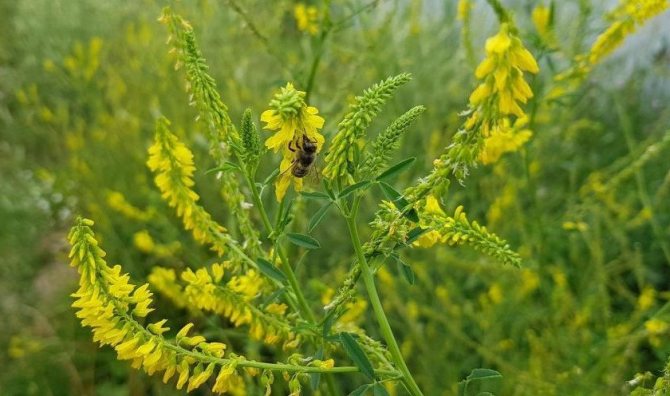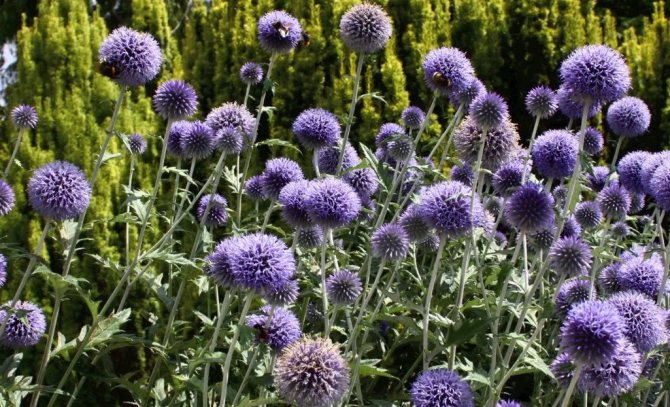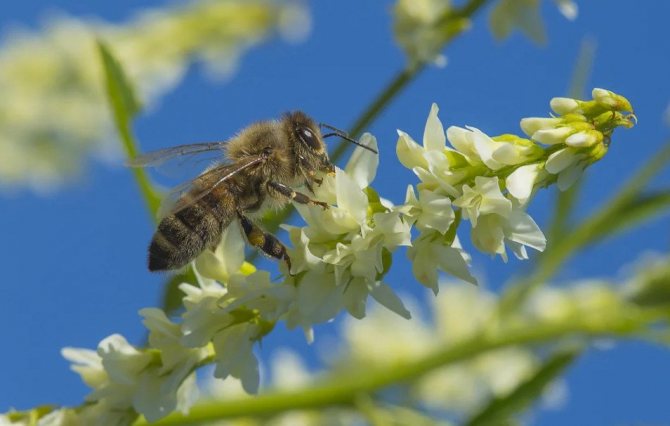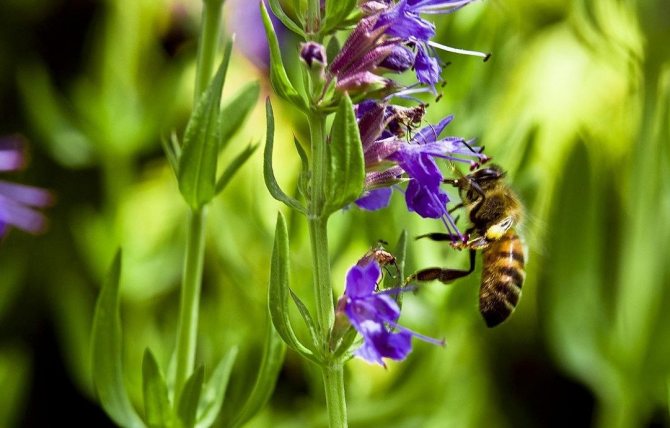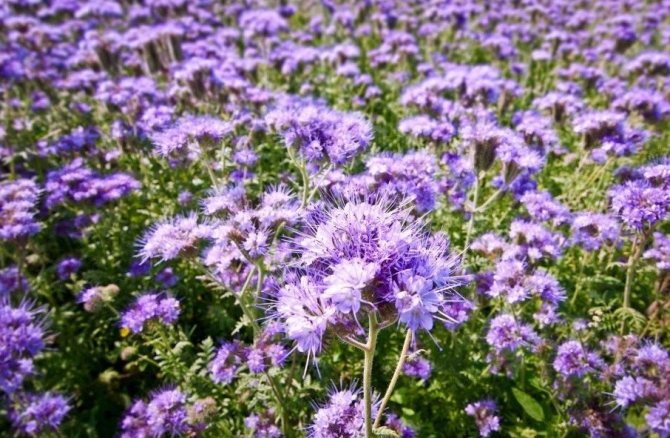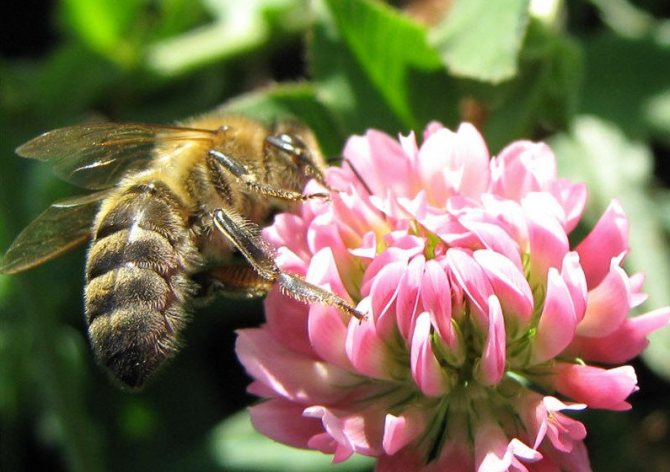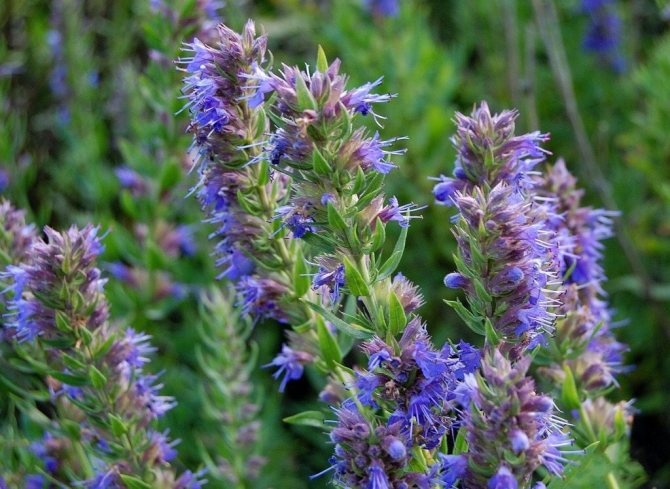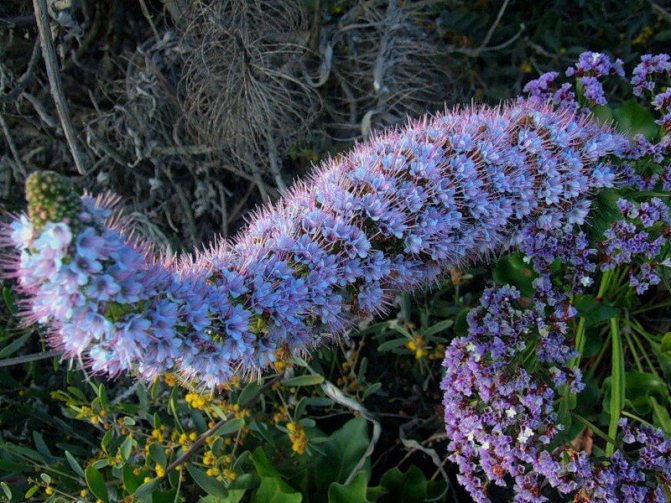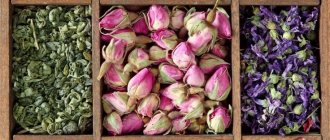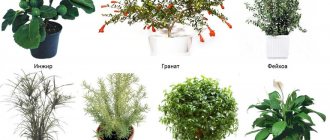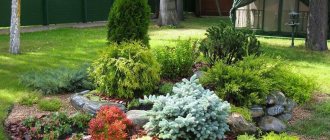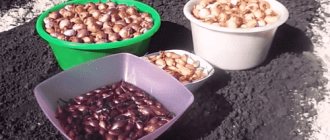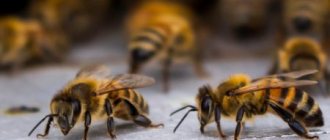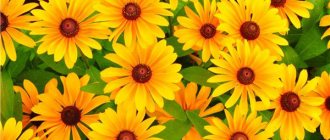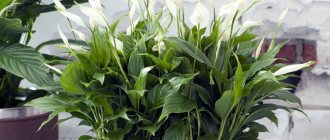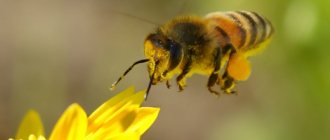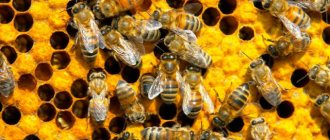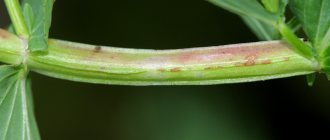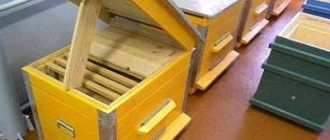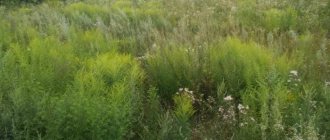Welcome to visit me, my dear friends and like-minded people! I am glad to welcome you! :))
I try to ensure that you can always find useful information on all questions of beekeeping on my website.
Therefore, I propose to talk today about the most important thing in our business - about which honey plants of the middle lane are the most effective in terms of their nectar productivity and which of them deserve to be actively introduced into the culture, specially sowing fields with them.
There are many such plants, whose flowers are the best honey plants for bees, in Russia. The first among these valuable and very promising melliferous plants is the sweet clover, which belongs to the legume family.
White and yellow melilot: a powerful melliferous culture
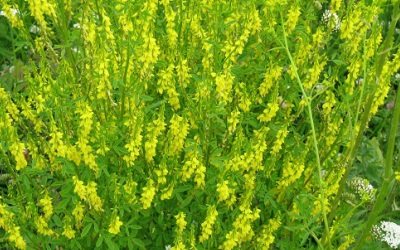
There is hardly a person who has not seen the sweet clover.
It is difficult to forget its huge bushes, reaching 1.5 m in height and growing where nothing seems to be able to grow: on loamy or rocky ground, on “killed” roadsides, at the bottom of ravines. Wherever you look, brushes of small yellow or white flowers, spicy smelling of coumarin, triumphantly rise everywhere.
You stick your head into the thick fragrant thickets - and for a long time afterwards you mentally enjoy the memory of this delicate and delicate aroma ...
All 12 varieties of sweet clover are the most melliferous plants: from 1 hectare of land overgrown with this grass, bees collect from 270 to 600 kg of honey (depending on whether the flowers are white or yellow). The average daily collection of honey for a bee colony can be almost 6 kg. And note: the plant produces nectar in any weather! So your bee nurses will always be in business. :))
The characteristic features of sweet clover honey:
- its color is most often white, although it can be with an amber tint;
- it has a transparent, slowly crystallizing consistency with a light vanilla flavor;
- keeps the aroma of a flowering plant
Crops of sweet clover are not only honey plants for bees, but also an opportunity for bee colonies to provide themselves with full-fledged food for the coming winter-spring period.
Over the entire summer spent in the melilot fields, bee colonies quickly increase their strength, increase the number of honeycombs, and the queens begin to lay eggs intensively.
And such a magnificent honey plant was previously even considered the worst weed because of its powerful root system and the ability to produce a lot of seeds. But it is known that any evil with the right approach can be turned into good.
Thanks to competent agricultural technology, this plant:
- prevents the growth of weeds;
- stops soil erosion;
- restores the lost structure of arable land;
- returns fertility to salt licks;
- serves as an excellent forage base for livestock
In a word, I am ready to sing the hymns to the sweet clover day and night! :))
However, there are other herbs that are equally important for beekeeping that need to be discussed.
Features of melliferous plants
If initially the food supply of bees consisted of flowering trees, shrubs and meadow grasses, then modern beekeepers have expanded bribes with specially sown crops, which significantly increase the productivity of honey harvest.
Did you know? The average bee colony can collect up to 10 kg of honey per day. To do this, she will need to visit about 80 million flowers.
Botanists distinguish honey trees, bushes and grasses into a separate group of angiosperms, the flowers of which are characterized by unique glands that produce a sugary liquid substance. These are nectaries, which can consist of flattened dots, strongly raised tubercles or deepened grooves at the base of the buds.
Abundant bribes are possible from wild meadow and forest grasses, as well as from specially grown, agricultural, fruit and berry, park and ornamental crops. Among them, beekeepers consider the most promising: clover, sunflower, buckwheat, acacia, maple, linden, sweet clover, phacelia.
The peculiarity of these plants is the intensive production of nectar during the flowering period, based on evolutionary processes aimed at cross-pollination of flowers with the help of insects.
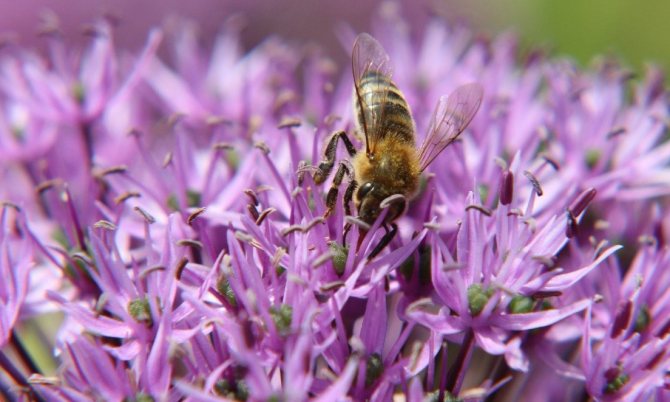

The period of budding and formation of cotyledons, as well as the amount of excreted sugars, depends on the biological characteristics of each type of vegetation, climatic and geographical factors. The unstable rate of nectar and pollen produced is influenced by the time of day. In some perennials, it appears more in the morning (for example, oregano, vetch), in others - in the afternoon (phacelia, loosestrife), and in others - in the evening (lungwort).
In sunny weather, bees collect nectar, processing it into honey and bee bread. If the bribe was received from cherry, poplar, birch or other plants that produce resinous substances, then the end product of insects will be propolis and uza.
It is characteristic that most honey plants have medicinal properties, but the amount of nectar emitted by one flower is different for them. For example, in a linden this figure is 0.14–7.55 mg, in a sweet clover - 0.19 mg, and in a tropical orchid - 30 g. In addition, not all plants are characterized by pollen production.
Did you know? Bees explore an area of about 12 hectares daily in search of food.
Porphyry sainfoin honey plant: best of the best!
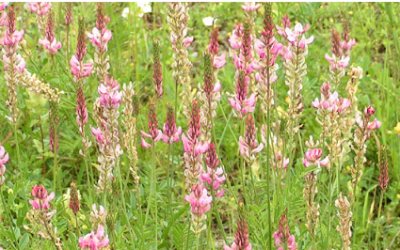

A tall (up to 70 cm) perennial herb sainfoin also belongs to the legume family; grows in our middle lane almost everywhere. Meadows, forest edges, glades covered with shrubs are his favorite places of “residence”.
On the territory of Russia, sainfoin (sainfoin), sandy and Transcaucasian sainfoin are mainly cultivated. The plant is used to obtain grass meal / hay, which significantly enriches livestock feed with vegetable protein and a mass of trace elements.
In the list of honey plants sown specifically for bees, sainfoin deservedly takes second place, which is appreciated by beekeepers all over the world. The flowering fields of the Transcaucasian sainfoin, which can be safely called the main source of first-class marketable honey, are characterized by a particularly high honey yield.
Brightly colored in pink or purple, spectacular conical brushes of sainfoin flowers are the best honey plants for bees, attracting joyfully buzzing workers throughout the day. The result of the friendly work of the bee colony will be 4 - 5 kg of fragrant delicacies. Under favorable conditions, the nectar productivity of this plant is so high that it can increase the total collection of honey from the usual 280 kg to a record 400 kg per hectare.
When forming apiaries, beekeepers always take into account the proximity to them of fields sown with sainfoin honey plant in order to guarantee themselves a successful season. This type of honey has such distinctive features as:
- light amber color;
- special transparency and delicate aroma;
- saturation of a pleasant taste;
- lack of fast crystallization
Do you want to feel the taste of a hot summer day in winter? Then you should have honey on your table, collected from the fields where the famous perennial honey plants are sown - sainfoin and sweet clover!
Clover
The plant belongs to perennial herbs, has several varieties: red, pink and white.All three species are considered first-class melliferous plants and are used as animal feed. Clover has complex inflorescences and attracts bees with its scent. The plant tolerates dryness and heat well. Under good weather conditions, the yield of honey harvest at the time of flowering is more than 100 kg per hectare.
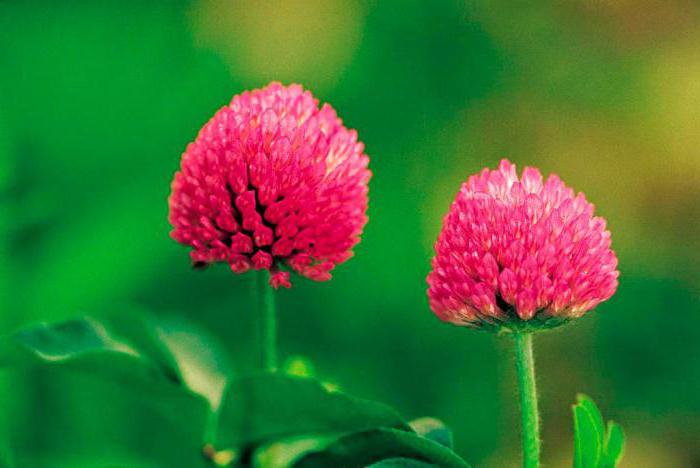

Red clover is more picky about the soil and conditions in which it grows. It does not tolerate rainy weather, high humidity and shaded areas. White is not so capricious, he feels normal in cold, frosty periods. Meadow adapts well to almost any soil, but does not like wet and shaded places. Like the red clover, it is found in the wild almost throughout the country.
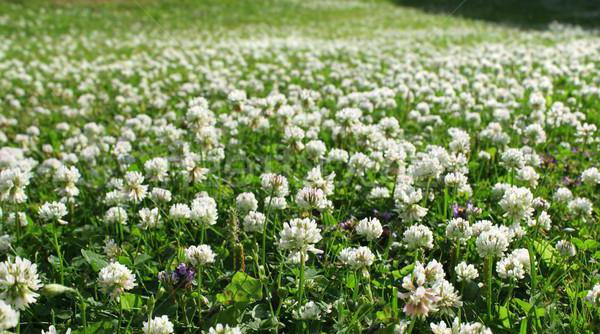

Clover is sown along with other herbs to increase the amount of honey during collection from the plots, after which it is used as animal feed. The inflorescence has the shape of a head, which has from 30 to 100 flowers. The branchiness of the plant improves in the second year. At the time of flowering, the head turns to the ground. Clover, the photo of which is presented above, is one of the most used melliferous plants.
The melliferous qualities of the muzzle: das ist fantastisch!
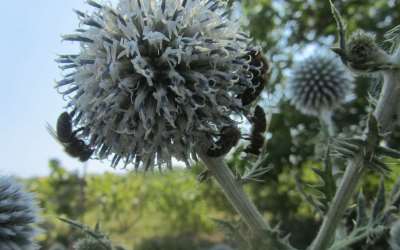

Perhaps you will not believe it, but this is the truth: the honey yield from 1 hectare of land sown with a muzzle is 1200 kg. Therefore, take a note: the perennial honey plant is a source of excellent honey with an amazing taste, which is in no way inferior to linden monoflora.
This plant from the Asteraceae family is also known under the name Tatarnik, barnyard, shoot. Unpretentious, not afraid of frost and drought-resistant, it is probably known to every inhabitant of our middle zone.
The tartar grows everywhere. Its 2-meter straight stems with globular blue inflorescences can be found on dry wastelands, rocky slopes of ravines, on forest edges and steppe meadows.
Important
Mordovnik has a remarkable advantage: its flowering begins just at a time when the main melliferous herbs for bees have practically all faded.
The light pleasant aroma of nectar saturated with sugars in a concentration of 60% and higher of the total volume attracts bees in incredible quantities: 1 honey plant in 1 hour can receive up to 180 shaggy “visitors”!
Other benefits include:
- high nectar productivity, which only increases with every year of the plant's life;
- undemanding (he does not need additional care in the form of watering and feeding);
- quick payback (secondary sowing is done 10-15 years after the first)
Novice beekeepers who have decided to independently cultivate perennial honey plants can easily confuse the ball-headed mordovia with its other varieties - tall and Russian mordovniks. Therefore, before buying seeds, it is advisable to consult a specialist.
Do you think honey plants are sown specifically for bees, I have already listed everything? Nope! There is still a lot of interesting things ahead. :))
Yarrow - Autumn Honey Grass
Yarrow belongs to the category of ordinary honey plants, which can be found almost everywhere: in the steppe, forest, meadows, near roads, landfills. The stem has a single erect structure with a height of 20 cm to one meter. The honey harvest begins in mid-summer and ends at the end of September. Having small, basket-shaped inflorescences, yarrow is especially well accepted by all bee breeds. The special value of the honey plant is its late flowering. When the collection of nectar from other herbs ends, and the bees have less and less land, this plant blooms. Beekeepers refer to the yarrow as an autumn melliferous herb.
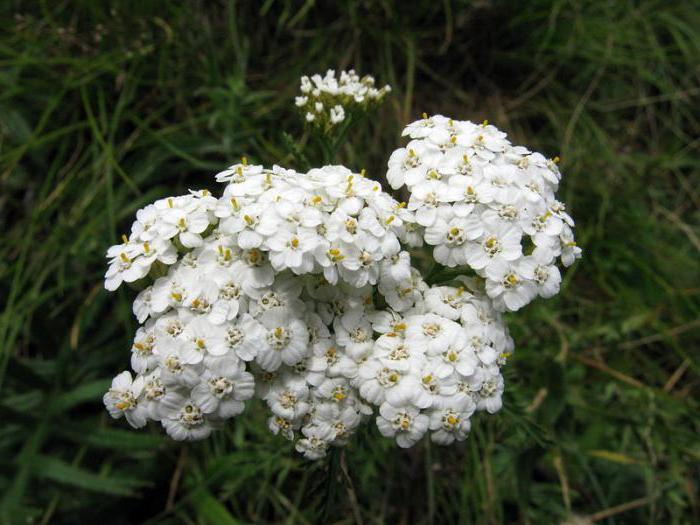

The focus is on the bruise of the honey plant as a reflection of the unique capabilities of Mother Nature


A refined taste, an indescribable aroma, a mass of useful properties - this is what honey is, which gives an ordinary bruise to a modest, at first glance, inconspicuous plant.
Its small pink bell-shaped flowers, which eventually acquire a blue color, are collected in the so-called. curls forming spike-shaped inflorescences. They are able to release a considerable amount of nectar (16 mg), which drives all bees crazy with its ineffable fragrance.
Yes, it is not for nothing that the bruise was included in the TOP-10 of the most honey-bearing herbs! He rightfully occupies an honorable place in this list, being next to the common favorite lime tree.
Two-year bruise is a honey plant that has earned the title of the most valuable culture in beekeeping. Judge for yourself:
- A persistent, picky bruise can grow in the most severe conditions, presenting only one condition to the beekeeper who sowed it - good sunlight.
- Does not need complex agrotechnical measures.
- The initial planting of the seeds of the plant is subsequently replaced by its self-sowing.
- Blooming of a bruise, which begins in June, does not stop until the first frost.
- The nectar is firmly adhered to the flowers, not evaporating in the heat and not being washed away by rains.
- The honey productivity of 1 hectare of bruise is 850 kg.
In addition, it is also a very beautiful plant, especially when its flowers turn blue. People call the carpet of heavenly beauty the field on which an extraordinary ordinary bruise grows. :))
Well? Have you already decided what kind of melliferous plants you will sow at home? If not, read on. :))
Best honey plants
In general, there are more than 30 types of honey plants in nature, each of which differs in its properties, structure and fertility. Honey plants sown specifically for bees require constant care and appropriate conditions.
If we talk about the most popular plants, then there are about a dozen of them. Today the best honey plants are:
- buckwheat;
- clover;
- sainfoin;
- sunflower;
- cotton;
- melons and vegetables;
- white acacia;
- gleditsia;
- Linden;
- phacelia.
Of course, there are many more types of honey plants, but the above plants are the most common and they are most widely used in agriculture and beekeeping.
Phacelia: the latest honey plant
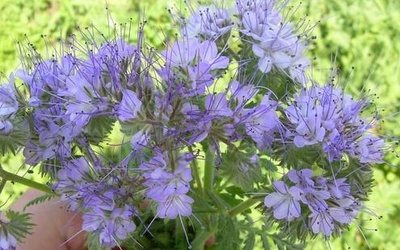

The annual phacelia tansy, belonging to the aquifolia family, proudly bears the title of one of the most powerful melliferous plants. She grows up to 90 cm in height; its bluish flowers, collected in a curl, form a one-sided inflorescence, emitting a delicate sweet aroma.
Bees visit it very willingly. Note: so willingly that bee colonies “graze” on phacelia flowers even after sunset, and this is generally typical only for raspberries. Here she is so desirable, this beauty ... :))
Loved by bees, the phacelia thanks insects and humans with a creamy golden honey, the taste of which cannot be forgotten. But besides this generous gift, the phacelia melliferous plant shows useful properties in its other advantages, including:
- its amazing ability to suppress the development of weeds;
- non-susceptibility to damage by pests and diseases; amazing frost resistance (even at t -9 ° (C), the plant does not freeze and continues to release nectar);
- absolute unpretentiousness, undemanding to soils (it grows anywhere, except perhaps permafrost);
- the ability to use phacelia as a green manure, i.e. green fertilizer, 100 kg of which replaces 300 kg of humus;
- high early maturity (phacelia blooms 35 - 45 days after sowing; flowering lasts 40 days);
- abundant secretion of nectar and decent honey productivity (from 1 hectare you can get a medicinal product in an amount of 150 to 250 kg, or even more)
... I look at the hives with bees, the magnificent meadows and fields covered with blue phacelia, and I remember Mikhail Prishvin ...
However, away from reverie! After all, we still need to discuss the common heather honey plant shrub: without it, the overview of melliferous plants will be incomplete.
List of flowers-melliferous plants and their "honey yield"
In addition to the main ones, there are also additional honey plants, they are inferior to them in the amount of honey that bees can collect from them.
Among them are:
- Meadow cornflowers - from 1 hectare bees collect up to 110 kg;
- Mint - up to 200 kg per hectare;
- Autumn kulbaba - up to 80 kg per hectare;
- Mother and stepmother - up to 30 kg. per hectare;
- Medicinal lungwort - from 80 to 30 kg per hectare;
- Dandelion - up to 50 kg per hectare;
- Buckwheat - up to 100 kg per hectare;
- Chernogolovka - up to 120 kg. honey per hectare.
Especially for collecting honey, the fields are sown with a perennial plant with blue inflorescences - this is an ordinary bruise. The collection of honey from one hectare of such plantings can be up to 800 kilograms.
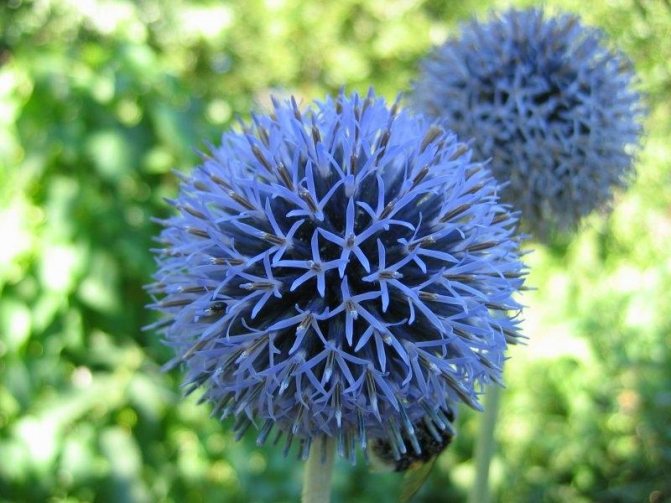

Of the wild plants, the mordovnik can be distinguished, which has recently been grown in garden conditions. It makes sense to specially sow with a muzzle and separate fields. So, from one hectare bees manage to collect up to 1200 kg. honey.
When creating planned plantings for collecting honey, it is recommended to sow several varieties and crops with different flowering periods. It is also worth complementing such honey plantations with flowering shrubs and trees, such as linden, bird cherry, acacia.
Features of raspberries as a honey shrub
The duration of raspberry flowering compensates for the honey harvest during the hottest period of the season. Its total productivity reaches 100 kg. per hectare. In terms of one bee colony, the profit can be up to 4 kg. honey.
Acacia and linden
Linden and acacia bloom before all others, which allows beekeepers to collect the very first or early honey. It should be noted that acacia honey is sometimes valued higher than linden honey. It has a bitter taste and a bright, rich aroma. Both lime and acacia honey have a light amber hue and the ability to remain liquid for a long time and not crystallize. Bees collect up to 1000 kg from 1 hectare of linden plantations. honey.
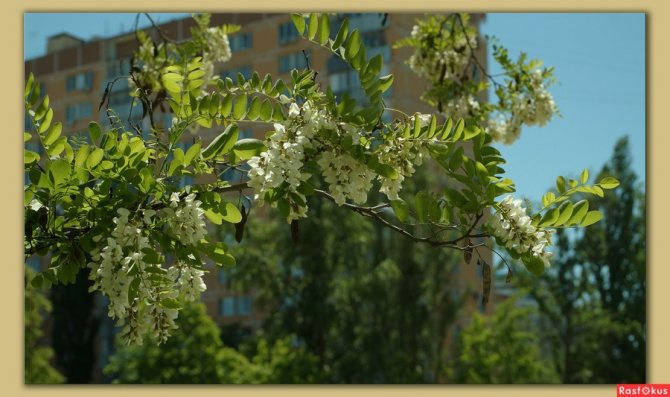

Garden honey plants
If the bee colony is small and there are several hives, then they can be placed in the garden. Moreover, it must be planted with honey flowers.
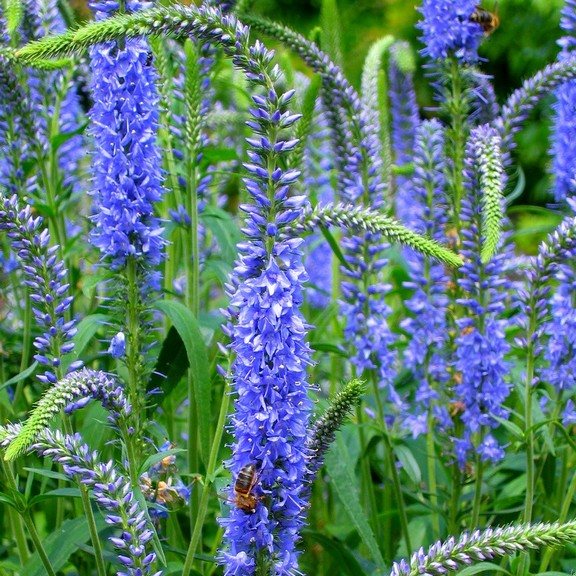

So, for a personal plot, you can choose for planting:
It is recommended to keep bindweed and dandelions. It is also recommended to place a raspberry tree, lilac, acacia, cherry or plum bushes on the site. You can attract the attention of bees not only by the bright color of the flowers, but by planting melons and gourds - cucumbers, zucchini, melons, watermelons.
Evergreen Heather: Plant and Appreciate!
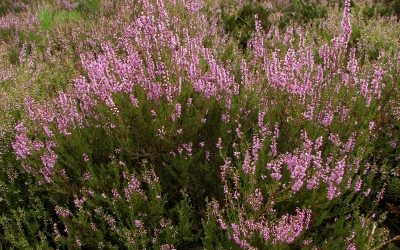

The refined appearance of an elegant low shrub (its height does not exceed 70 cm) attracts attention simply by its rare decorativeness. Decorate your garden with this perennial plant - and the heather honey plant will not only delight you with the charm of lacy, as if weightless, bell flowers, densely degrading the branches, but will also continuously provide your whole family with healing honey.
Heather loves the climate of the Russian central zone most of all. For him, only one thing matters: that the composition of the soil does not include lime or calcium, because heather is extremely sensitive to high soil alkalinity.
The rich bloom of heather lasts from July to September. The squat creeping bush, being a powerful honey plant, summons bees from all over the area with a strong smell and large reserves of nectar. And insects from everywhere flock to the feast prepared for them inside boiling white, pale pink or bright crimson flowers.
The honey productivity of flowering heather is impressive: on a hectare of continuous thickets, bees extract 150-200 kg of “liquid gold”. In a good year, a strong bee colony produces up to 30 kg of heather honey per season.
This honey stands out noticeably against the background of other varieties:
- it has a dark red color;
- its specific aroma is characterized by high intensity and persistence;
- the tart taste of heather honey has a slightly bitter taste;
- it is characterized by a very long crystallizing, unusually stringy consistency (which even complicates the process of extracting honey from combs)
Well, are you not tired? And then I would like to say at least a few words of praise in honor of the linden: this honey tree, which all Russians love so reverently, is worthy to become the crown of our conversation.
Goldenrod
The herb goldenrod is a representative of meadow melliferous plants, which belong to perennial compositae plants. Inflorescences are solitary, not branched, collected in panicles of a basket. The flower is yellow, has a complex shape.
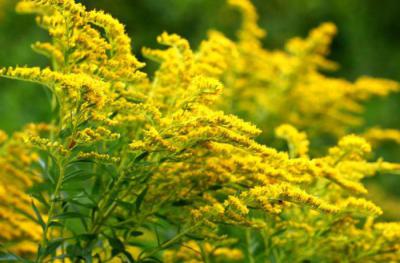

Goldenrod blooms almost all summer and even in mid-September, the grass is easily detected by its peculiar inflorescences. It is a good honey plant with a high percentage of sugar, which is the main factor in harvesting. Goldenrod grows throughout the country, except for the regions bordering Central Asia. This representative of Asteraceae tolerates hot weather well, without stopping the flowering process.
The heather herb is a highly branched perennial plant that looks more like a shrub. The height of the stems is from 30 cm, but sometimes it can reach the meter mark. The bush is densely covered with short, soft, wedge-shaped leaves. At the top of the heather there are bell-shaped inflorescences of both sexes. The flowering time of melliferous plants covers most of the summer and the beginning of autumn. This factor allows you to control the time of honey collection using mobile apiaries.
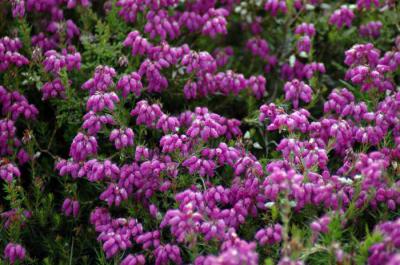

Read also: Dzhungarian Aconite (plant) - application and treatment with Aconite, how to prepare a tincture?
Heather belongs to medicinal herbs, has healing properties. This quality is taken into account when selling the harvested honey, increasing the price of the product. The nectar harvesting season starts in mid-June. The product differs in color and taste. As a rule, heather honey is dark red in color, with a pleasant smell and a slightly tart and bitter taste. A feature of pumping is its strong ductility, which complicates the process of driving. Heather honey does not crystallize well.
Linden: the crowned queen of melliferous plants of the middle lane
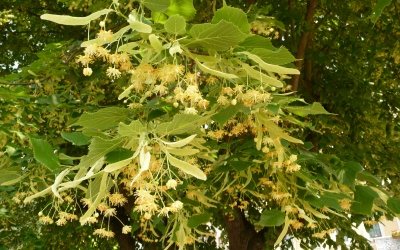

If you have a piece of land, albeit a small one, be sure to plant a linden tree! This tree has no equal:
- 1 hectare of linden forest gives a ton of incomparable, the most useful honey;
- despite the short period of honey collection (12-14 days), bees can collect from 3 to 5 buckets of nectar from one adult tree;
- open linden nectaries facilitate insects' access to the sugary liquid, which creates favorable conditions for the prompt collection and processing of nectar into honey
Of course, there is no barrel of honey without a spoon, even a tea spoon, tar. This I mean that a seemingly positive nuance - the availability of nectaries - instantly turns into a huge minus in case of rain, strong winds or drought.
All the nectar is either washed out, or crumbles, or completely dries up if one of the aforementioned spontaneous force majeure occurs - and the stormy phony bribe abruptly stops.
But if a favorable summer comes out, then fragrant light amber honey-lipets will not leave your table all winter. The extremely high content of antiviral and antimicrobial substances in it will help you and your family stay healthy even in the midst of SARS and various other “flu”.
Honey plants sown specifically for bees
To ensure a continuous process of honey collection and improve the indicators of the quantity and quality of the product around the apiary, honey-bearing herbs with different flowering periods are sown. They are not very demanding on the composition of the soil and weather conditions, and at the same time they produce large volumes of nectar. Improves the bribe mowing of grasses, so that they bloom 2-3 times per season.The choice of honey plants sown next to the apiary is determined by their nectar productivity and benefits for the economy. Many of them are fodder, medicinal, oilseeds.
Honey plants blooming in July
Many of the June melliferous grasses continue to bloom in July. They are joined by Lavender, Mint, Zubchatka, Vatochnik, Lofant, Echinacea, Sunflower, Zhabrey, Cornflower meadow, Ivan-tea, Donnik. For beekeeping, the variety of melliferous herbs growing around is important. Weather conditions affect honey productivity - temperature, humidity, lack of rain and wind. Most of the nectar of the plant is released in the first half of the flowering period.
A number of honey plants bloom all summer even without mowing - Volovik, Rurepka, Cumin, Comfrey, Reseda, Valerian, Ammi dental, Snyt, Donnik, Lucerne, Clover.
Spring and early summer honey plants
Productive beekeeping is impossible without ensuring continuous honey collection throughout the active season. By the time of flowering, melliferous plants are divided into early spring, early summer, summer, late summer and autumn. The very first, in April, the following honey plants bloom: Mother and Stepmother, Ryzhik, Periwinkle and Medunitsa. These herbs help bees to recover and gain strength after hibernation. In May, the period of flowering of honey plants of Volovik, Caraway, Adonis, Comfrey, Wild radish, Sverbiga, Goat's, Rapeseed, Esparcet begins. They are characterized by high honey productivity.
Important! In summer, most of the melliferous herbs that provide the main honey harvest bloom - Buckwheat, Mustard, Melissa, Angelica, Anise, Sinyushnik, Thistle, Meadow geranium, Anise, Coriander.
Melilot yellow
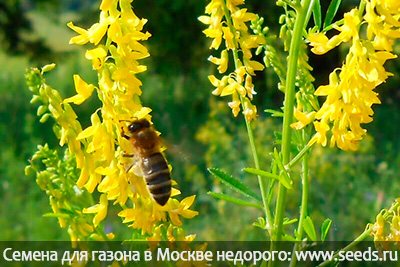

Yellow sweet clover (Melilótus officinális)- a two-year-old herbaceous honey plant from the legume family, subfamily Moths. Its yellow flowers are small. Donnik blooms the next year after sowing.
Flowering begins in June and lasts one and a half to two months. Sweet clover is appreciated as a honey plant because of the significant number of flowers. There are approximately 1 million flowers per 1 square meter.
Bees love this plant and collect a large amount of pollen and nectar, from which they later make excellent melilot honey. Donnik honey is recognized as one of the best varieties.
Melilot yellow grows on different soils, is unpretentious, unless the soil is acidic or there is a nearby location of groundwater. It is often used for sowing melliferous grass mixtures.
Nowadays, it is not so often you can find Donnik in large quantities, more often it grows dotted along roads, on the banks of rivers, on the edges and in other places, and all because it is considered a weed and is fought with it. Because of this, its population in places close to human activity is not so large.
How to organize a honey plant for bees in an apiary
The main condition for productive beekeeping is to provide a sufficient food supply for insects. A good bribe can be obtained if the following conditions are met:
- Arrays of highly productive honey plants are located within the effective summer radius of bees, no further than 3 km.
- Large areas are sown with the main melliferous plants.
- There is a species diversity of honey plants useful for beekeeping.
- The flowering time of honey plants allows for continuous high-quality honey collection.
For the health of bees, it is important to provide them with an early-spring supporting bribe from honey grasses, which is necessary to build up families for the main honey harvest. Summer - the main bribe should be abundant and the beekeeper should take care of this in advance. Autumn honey collection from grasses is declining in intensity and is mainly aimed at preparing families for wintering.
